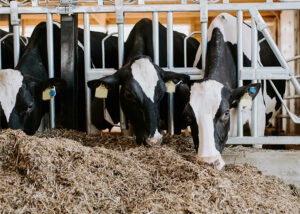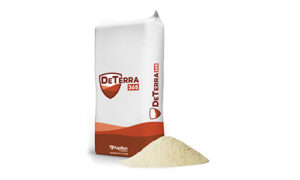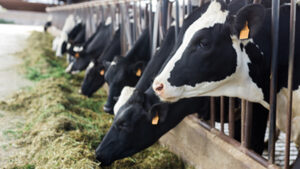The origins of MIN-AD.
Since the 1960s MIN-AD® has been mined in the Sonoma Range of northern Nevada for use as a cattle nutritional supplement. The ore deposit was formed about 220 million years ago. At that time, this region of Nevada was coastline and was the site of deposition of very fine high magnesium carbonate particles. The carbonate deposition gradually led to the formation of thick beds of magnesium rich carbonate rock.
In 1999, MIN-AD, Inc. commissioned a geological and ore reserve study which involved extensive drilling of the deposit. The drilling program indicated “a strong homogeneity” to the deposit and enough reserves for many decades. The deposit is pure and homogeneous calcium magnesium carbonate, with very low levels of impurities. This means that the chance of contamination during mining is minimal as the mined ore does not have to be separated from waste rock. The mined ore is crushed at the quarry and then is hauled to MIN-AD’s processing plant in Winnemucca where it is ground and screened to three different particle size fractions for dry, liquid, and range feed applications. The plant is Safe Feed/Safe Food certified and supplies mineral exclusively for livestock feed. Because of this focus, all of the mining, processing, and transport is carried out with livestock feed safety in mind. The mineral is also OMRI organic certified.
The chemistry at work.
MIN-AD contains both magnesium and calcium ions, in a 1:1 ratio, bound to carbonate ions. Since calcium is almost twice as heavy as magnesium, the percentage by weight is 22% calcium and 12% magnesium. When the carbonate comes in contact with acid, for example short chain fatty acids in the rumen or hydrochloric acid in the abomasum, the carbonate combines with a hydrogen ion to produce water and carbon dioxide. This results in acid neutralization. When this process happens, the calcium and magnesium are simultaneously released into solution. Therefore, MIN-AD is fed as both a mineral source and a “buffer”.
The application for dairy producers.
MIN-AD has been used throughout the United States, Canada, and Mexico for over 50 years on both feedlots and dairies. The feedlot research data from 8 trials demonstrated an average DMI increase of 0.56%, a 2.15% increase in ADG, and a 1.73% improvement in feed to gain conversion. Numerous university and commercial dairy lactation trials have shown MIN-AD to be an effective buffer and source of Mg. Transition cow trials have demonstrated increased pre-partum intake and overall improvements in health status. Ongoing in vivo research continues to show that replacing conventional buffers and mineral sources with MIN-AD offers considerable cost savings to feedlots and dairies.
Click here to view the original article on Feedstuffs.





